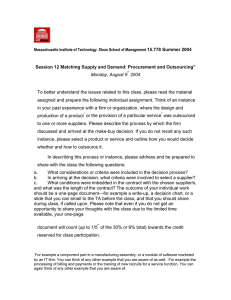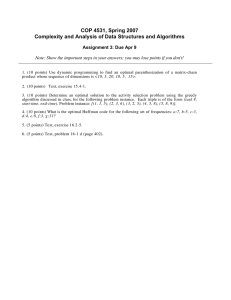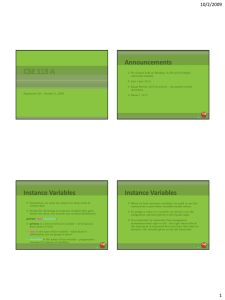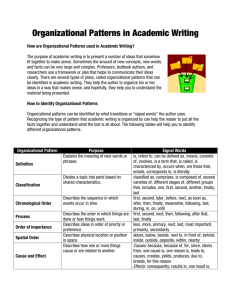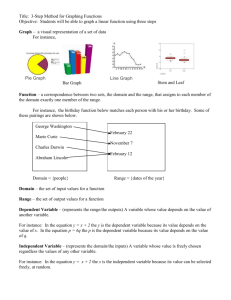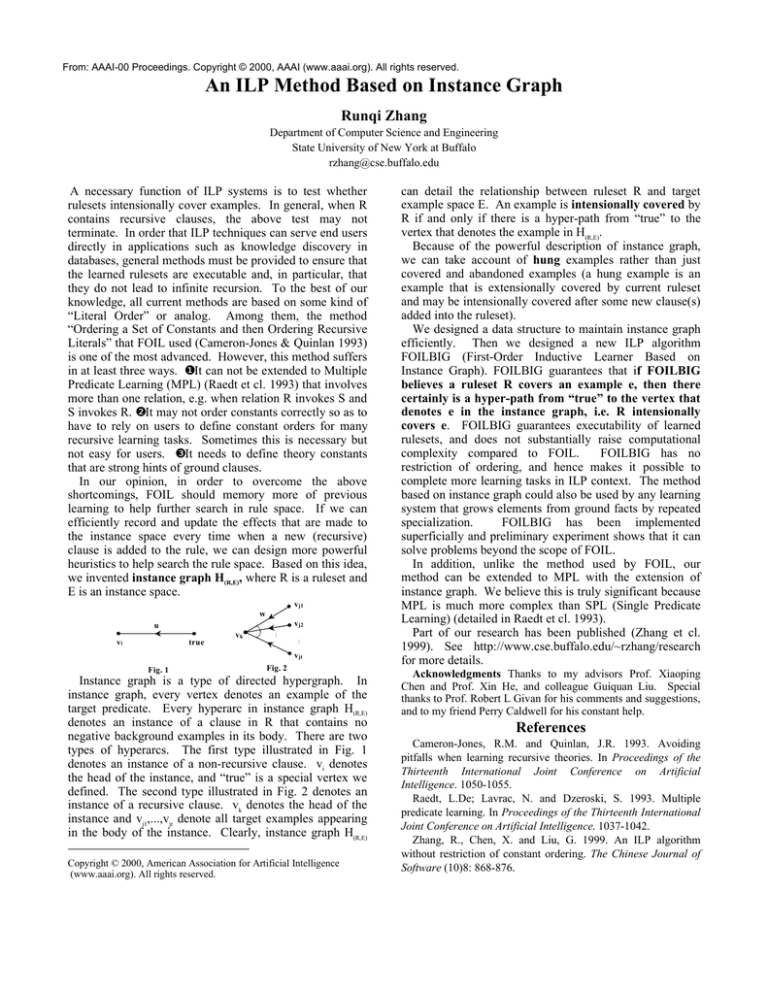
From: AAAI-00 Proceedings. Copyright © 2000, AAAI (www.aaai.org). All rights reserved.
An ILP Method Based on Instance Graph
Runqi Zhang
Department of Computer Science and Engineering
State University of New York at Buffalo
rzhang@cse.buffalo.edu
A necessary function of ILP systems is to test whether
rulesets intensionally cover examples. In general, when R
contains recursive clauses, the above test may not
terminate. In order that ILP techniques can serve end users
directly in applications such as knowledge discovery in
databases, general methods must be provided to ensure that
the learned rulesets are executable and, in particular, that
they do not lead to infinite recursion. To the best of our
knowledge, all current methods are based on some kind of
“Literal Order” or analog. Among them, the method
“Ordering a Set of Constants and then Ordering Recursive
Literals” that FOIL used (Cameron-Jones & Quinlan 1993)
is one of the most advanced. However, this method suffers
in at least three ways. ❶It can not be extended to Multiple
Predicate Learning (MPL) (Raedt et cl. 1993) that involves
more than one relation, e.g. when relation R invokes S and
S invokes R. ❷It may not order constants correctly so as to
have to rely on users to define constant orders for many
recursive learning tasks. Sometimes this is necessary but
not easy for users. ❸It needs to define theory constants
that are strong hints of ground clauses.
In our opinion, in order to overcome the above
shortcomings, FOIL should memory more of previous
learning to help further search in rule space. If we can
efficiently record and update the effects that are made to
the instance space every time when a new (recursive)
clause is added to the rule, we can design more powerful
heuristics to help search the rule space. Based on this idea,
we invented instance graph H(R,E), where R is a ruleset and
E is an instance space.
vj1
w
vj2
u
true
vi
vk
M
M
vjt
Fig. 1
Fig. 2
Instance graph is a type of directed hypergraph. In
instance graph, every vertex denotes an example of the
target predicate. Every hyperarc in instance graph H(R,E)
denotes an instance of a clause in R that contains no
negative background examples in its body. There are two
types of hyperarcs. The first type illustrated in Fig. 1
denotes an instance of a non-recursive clause. vi denotes
the head of the instance, and “true” is a special vertex we
defined. The second type illustrated in Fig. 2 denotes an
instance of a recursive clause. vk denotes the head of the
instance and vj1,...,vjt denote all target examples appearing
in the body of the instance. Clearly, instance graph H(R,E)
Copyright © 2000, American Association for Artificial Intelligence
(www.aaai.org). All rights reserved.
can detail the relationship between ruleset R and target
example space E. An example is intensionally covered by
R if and only if there is a hyper-path from “true” to the
vertex that denotes the example in H(R,E).
Because of the powerful description of instance graph,
we can take account of hung examples rather than just
covered and abandoned examples (a hung example is an
example that is extensionally covered by current ruleset
and may be intensionally covered after some new clause(s)
added into the ruleset).
We designed a data structure to maintain instance graph
efficiently. Then we designed a new ILP algorithm
FOILBIG (First-Order Inductive Learner Based on
Instance Graph). FOILBIG guarantees that if FOILBIG
believes a ruleset R covers an example e, then there
certainly is a hyper-path from “true” to the vertex that
denotes e in the instance graph, i.e. R intensionally
covers e. FOILBIG guarantees executability of learned
rulesets, and does not substantially raise computational
complexity compared to FOIL.
FOILBIG has no
restriction of ordering, and hence makes it possible to
complete more learning tasks in ILP context. The method
based on instance graph could also be used by any learning
system that grows elements from ground facts by repeated
specialization.
FOILBIG has been implemented
superficially and preliminary experiment shows that it can
solve problems beyond the scope of FOIL.
In addition, unlike the method used by FOIL, our
method can be extended to MPL with the extension of
instance graph. We believe this is truly significant because
MPL is much more complex than SPL (Single Predicate
Learning) (detailed in Raedt et cl. 1993).
Part of our research has been published (Zhang et cl.
1999). See http://www.cse.buffalo.edu/~rzhang/research
for more details.
Acknowledgments Thanks to my advisors Prof. Xiaoping
Chen and Prof. Xin He, and colleague Guiquan Liu. Special
thanks to Prof. Robert L Givan for his comments and suggestions,
and to my friend Perry Caldwell for his constant help.
References
Cameron-Jones, R.M. and Quinlan, J.R. 1993. Avoiding
pitfalls when learning recursive theories. In Proceedings of the
Thirteenth International Joint Conference on Artificial
Intelligence. 1050-1055.
Raedt, L.De; Lavrac, N. and Dzeroski, S. 1993. Multiple
predicate learning. In Proceedings of the Thirteenth International
Joint Conference on Artificial Intelligence. 1037-1042.
Zhang, R., Chen, X. and Liu, G. 1999. An ILP algorithm
without restriction of constant ordering. The Chinese Journal of
Software (10)8: 868-876.



